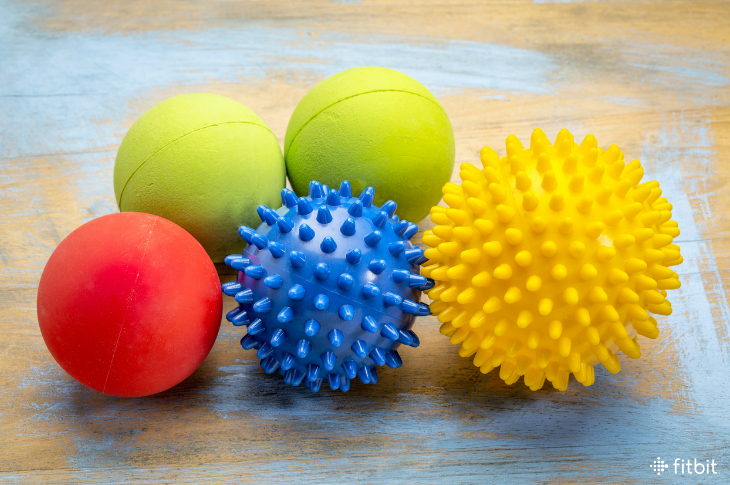
Over the past few years, foam rollers have become a fitness staple in many people’s mobility routine. And it’s no wonder: They’re great for improving range of motion and reducing muscle soreness. But foam rollers aren’t the only way to practice self-myofascial release—you can also use a small, hard ball, like a lacrosse ball, to work out muscle kinks and soreness.
“A lacrosse ball is a simple tool that everyone can use to ease stiffness, reduce pain, and ultimately help body positioning and performance,” says Kelly Starrett, DPT, a physical therapist, coach, and author of Becoming a Supple Leopard. “They’re small and strong, so they can get into areas a foam roller can’t. They also happen to be super inexpensive!”
Unless you’re suffering from back tension that won’t go away or IT-band tightness that seems to rear its head on a daily basis, you might wonder why you should even set time aside for some soft-tissue work. After all, teasing out muscle kinks and working connective tissue, ligaments, and fascia takes effort. But it’s time well spent.
“Tissue that’s stiff doesn’t function as well,” says Starrett. “Making your soft tissue healthier through self-myofascial release can improve work capacity, strength, and stamina, and reduce pain.”
Ready to give lacrosse-ball self massage a shot? Keep these four pointers in mind.
1. Set Aside 10 Minutes
While it might not seem like much, setting aside 10 minutes before bed to roll out is ideal. “That’s long enough to make a difference but not so long that you overdo it,” says Starrett. “Plus, soft tissue work can have a parasympathetic effect, meaning it can help you fall asleep faster and sleep more deeply.”
2. Remember To Breathe
When you’re working on easing tension—targeting tough spots and pushing through the soreness—maintaining a steady breath may take a backseat. It shouldn’t. In fact, your breath should play a big role in the process.
To use a lacrosse ball correctly, place it under a part of your body (like your shoulders, hamstrings, or quads), and let your body weight push down on the ball. Roll around until you find a spot that feels a little uncomfortable. Stop there and breathe in for four seconds. Then clench the muscle where the ball is and hold for four seconds. Finally, relax the muscle and exhale for eight seconds. “The longer exhale tells your body to relax,” says Starrett. Repeat this breathing technique until the area has softened up and you can put your full weight on the ball. Then move on to the next spot.
3. Target One Area At A Time
Don’t think of lacrosse-ball release as a full-body workout. This is one case where less is more. Instead of going from head to toe, spend one night working on your legs and the next on your upper back. Each night, move your focus to a different muscle group with the goal of hitting all major body parts by end of week.
The one thing to remember: Make sure to hit both sides. If you do your right leg, do your left leg the same night. Need some inspiration for where to target? “Put the ball under a spot you feel stiff,” says Starrett. “Or, if you have pain somewhere, think about targeting the surrounding areas.” In other words, if your neck hurts, lie down and put the ball under the trapezius muscle in your upper back.
4. Stop If It Hurts
Discomfort, especially at first, is nothing to worry about, but if you feel sharp pain, reassess. “When you put the ball under a part of your body, it should feel good,” says Starrett. “If it hurts bad enough that you can’t take a full, deep breath, you need to back off the pressure by supporting your weight with your hands or throwing a towel over the ball.”
This information is for educational purposes only and is not intended as a substitute for medical diagnosis or treatment. You should not use this information to diagnose or treat a health problem or condition. Always check with your doctor before changing your diet, altering your sleep habits, taking supplements, or starting a new fitness routine.

If you have questions about a Fitbit tracker, product availability, or the status of your order, contact our Support Team or search the Fitbit Community for answers.
Please note: Comments are moderated and may not appear immediately after submission.